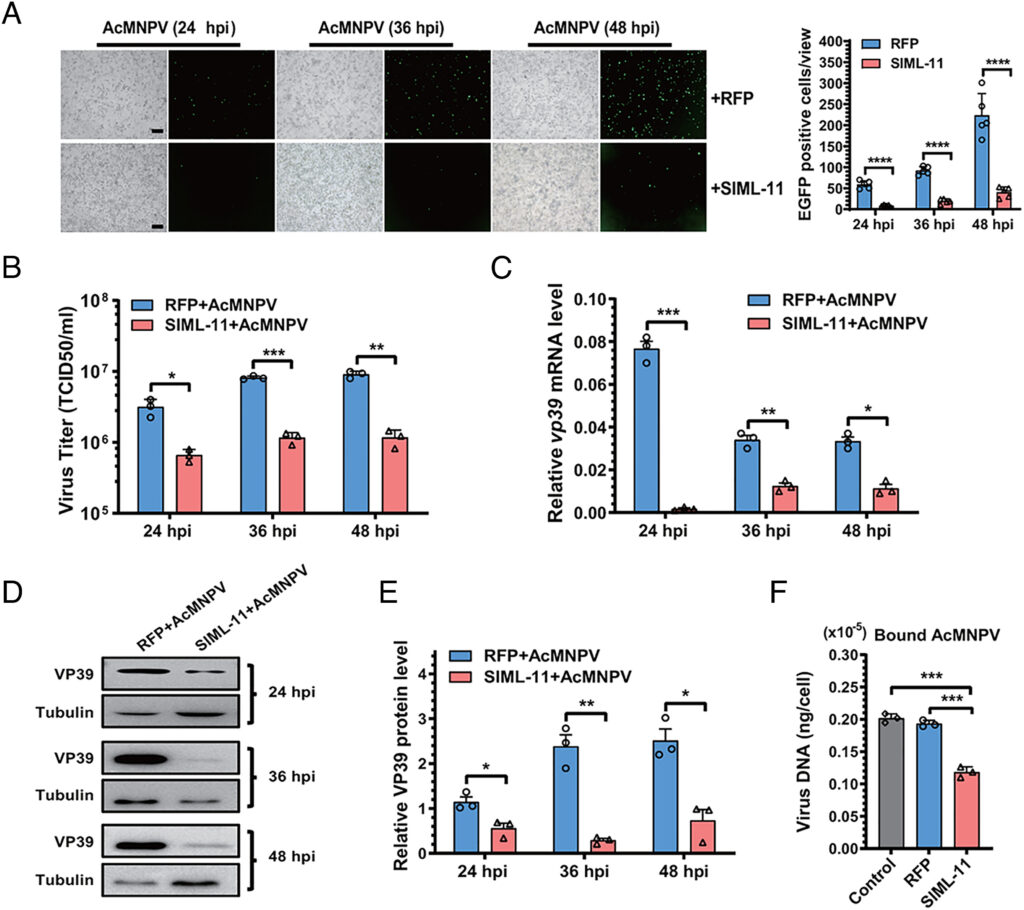A myeloid differentiation-like protein in partnership with Toll5 from the pest insect Spodoptera litura senses baculovirus infection

Many types of viruses infect insects and other arthropods. In contrast, little is known about how arthropods sense viruses, although several innate immune pathways including Toll have antiviral functions. Large DNA viruses in the family Baculoviridae are used to control a number of pest insects. Here, we studied Spodoptera litura and Autographa californica multiple nucleopolyhedrovirus (AcMNPV) to test the hypothesis that one or more myeloid differentiation-like (ML) proteins and Toll family members sense baculoviruses. We identified 11 ML and 12 Toll genes in the S. litura genome. A series of experiments indicated that S. litura ML protein 11 (SlML-11) binds the budded form of AcMNPV and partners with S. litura Toll5 (SlToll5). SlML-11 also bound sphingomyelin (SPM), which is a component of the virion envelope. Disabling SlML-11 and SlToll5 increased susceptibility to infection, while priming larvae with SPM reduced susceptibility as measured by increased survival to the adult stage and clearance of AcMNPV from individuals that emerged as adults. We conclude that SPM is a pathogen-associated molecular pattern molecule while SlML-11 and SlToll5 interact to function as a pattern recognition receptor that senses AcMNPV.
Ruonan Zhang, Jielai Zhong, Yanjun Li, Mengge Li, Jie Zhang, Qihao Hu, Liang Wen, Xiaoxia Xu, Fengliang Jin, Wanying Yang, Yuzhen Lu, Michael R Strand, Xiao-Qiang Yu. Proc Natl Acad Sci U S A. 2024 Oct 29;121(44):e2415398121. doi: 10.1073/pnas.2415398121.
